



Attack surface management (ASM) tools are software solutions that map and manage the elements of an IT infrastructure that can be targeted by cyber attacks. These tools provide visibility into an organization’s potential attack vectors, including hardware, software, and network components.
ASM tools continuously monitor for vulnerabilities, misconfigurations, and unauthorized changes, allowing organizations to mitigate potential risks. They help in identifying, assessing, and prioritizing threats. By providing actionable insights into the current state of an organization's security posture, these tools enable IT teams to enhance defenses and reduce attack surfaces.
This is part of a series of articles about attack surface management.
ASM tools typically include the following capabilities.
Asset discovery involves identifying all assets within an organization's network. This includes devices, applications, and cloud services that might be overlooked. It creates an accurate inventory, which serves as the foundation for further security measures. Automated tools are often used to conduct continuous scans, ensuring that no asset goes undetected.
This feature is essential because overlooked assets can become vulnerabilities. Identifying assets manually is impractical due to the scale and complexity of modern IT environments. ASM tools simplify this process and significantly reduce the risk of hidden threats by ensuring that every asset is accounted for and monitored.
Inventory and classification involve organizing the discovered assets into categories based on their function, criticality, and risk level. This helps in understanding which assets are most vital to an organization and which ones pose the greatest security risks. By maintaining a detailed and up-to-date inventory, organizations can prioritize their security efforts more effectively.
Classification also involves tagging assets with metadata such as ownership, lifecycle stage, and compliance requirements. This ensures that all assets are adequately protected and that high-risk areas receive the necessary attention. It also simplifies the process of applying security policies and responding to incidents.
Risk scoring involves evaluating the potential impact and likelihood of security incidents on identified assets. ASM tools assess vulnerabilities, threat levels, and the criticality of assets to assign a risk score. This score helps organizations understand the relative danger each asset poses to the overall security posture.
By quantifying risk, these tools enable organizations to prioritize their resources and efforts on the most significant threats. Security grading provides an overall assessment of an organization’s security posture. It considers the effectiveness of existing security controls, the presence of vulnerabilities, and compliance with industry standards.
Risk detection involves identifying potential security issues within an organization’s assets. ASM tools use automated scanning and analysis techniques to uncover vulnerabilities, configuration errors, and signs of malicious activity. The detection process covers known threats and also identifies new, emerging vulnerabilities that could be exploited by attackers.
Prioritization is the next step, where detected risks are ranked based on factors such as the severity of the vulnerability, the value of the affected asset, and the potential impact on the organization. This allows IT teams to focus their efforts on addressing the most critical issues first.
Continuous security monitoring provides ongoing assessment and vigilance over an organization's attack surface. Unlike periodic assessments, continuous monitoring offers real-time insights into security posture, allowing for immediate detection and remediation of vulnerabilities and threats.
This capability is essential for maintaining a resilient security posture in the face of evolving cyber threats. Continuous monitoring relies on automated processes and advanced analytics to ensure that security measures are always up-to-date and effective. It also supports compliance with regulatory requirements by providing continuous evidence of security activities.
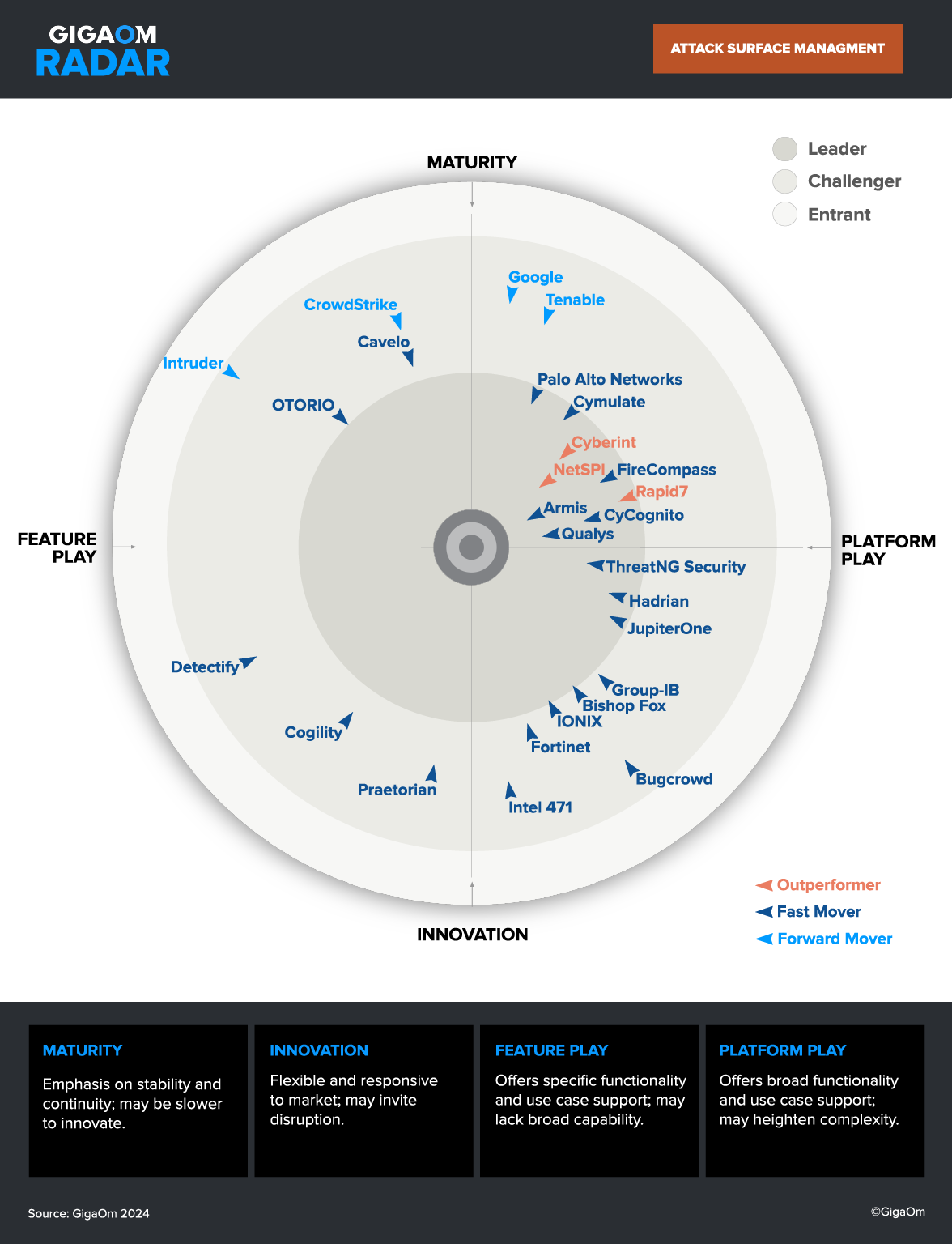
Access the GigaOm Radar for Attack Surface Management 2025 to get an overview of the available ASM solutions, identify leading offerings, and evaluate the best solution for you.
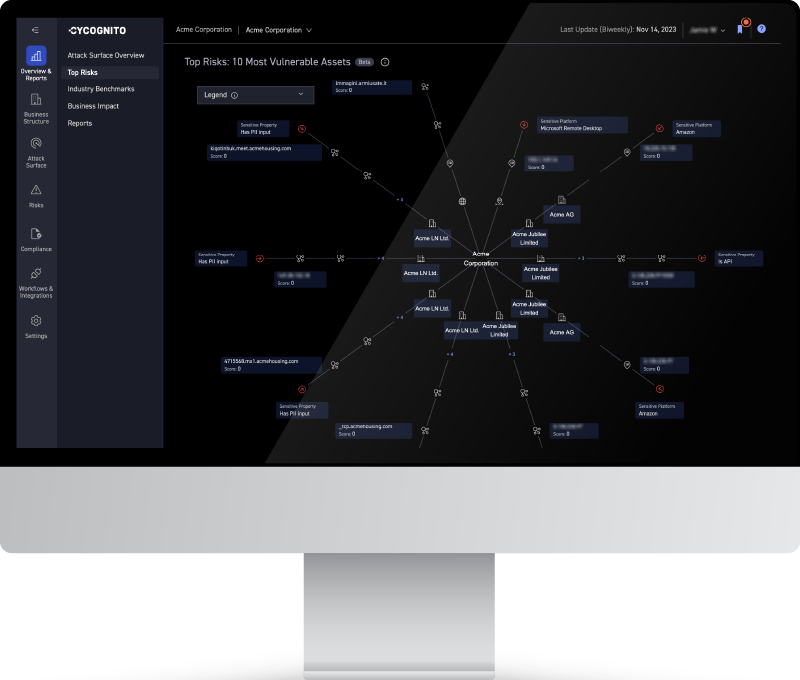
The CyCognito platform addresses today’s exposure management requirements by taking an automated multi-faceted approach in identifying and remediating critical issues based on their business impact, rather than focusing on the generic severity of the threat alone. To do this you need a platform that is continuously monitoring the attack surface for changes and provides intelligent prioritization that incorporates organizations context.
The CyCognito platform addresses today’s vulnerability management requirements by:
Learn more about the Cycognito Attack Surface Management Platform.
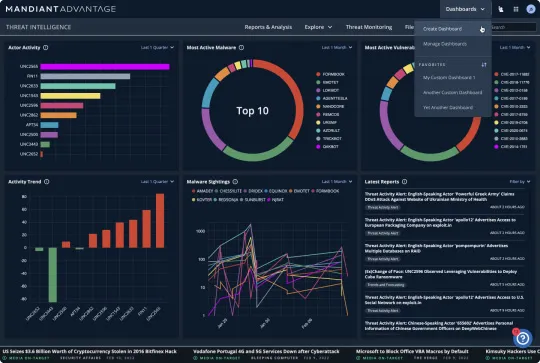
Mandiant's attack surface management solution offers tools to identify and manage external assets and vulnerabilities, providing insights to strengthen an organization's cybersecurity posture.
Key features of Mandiant attack surface management include:
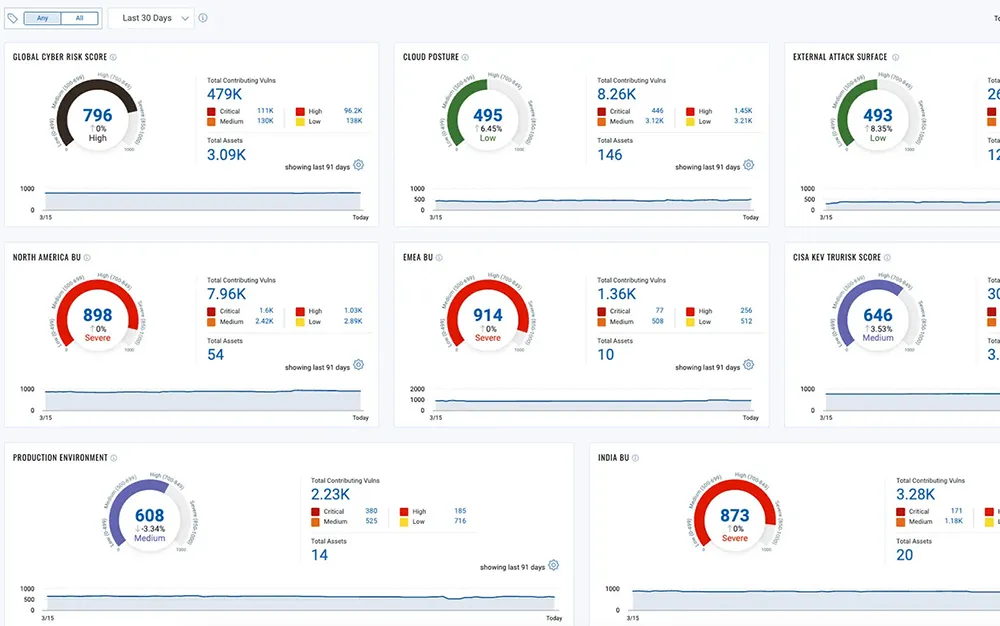
Qualys offers a cybersecurity asset management solution that provides organizations with visibility and control over their digital assets. It focuses on identifying and managing known and unknown assets across the enterprise's attack surface.
Key features of Qualys ASM Include:
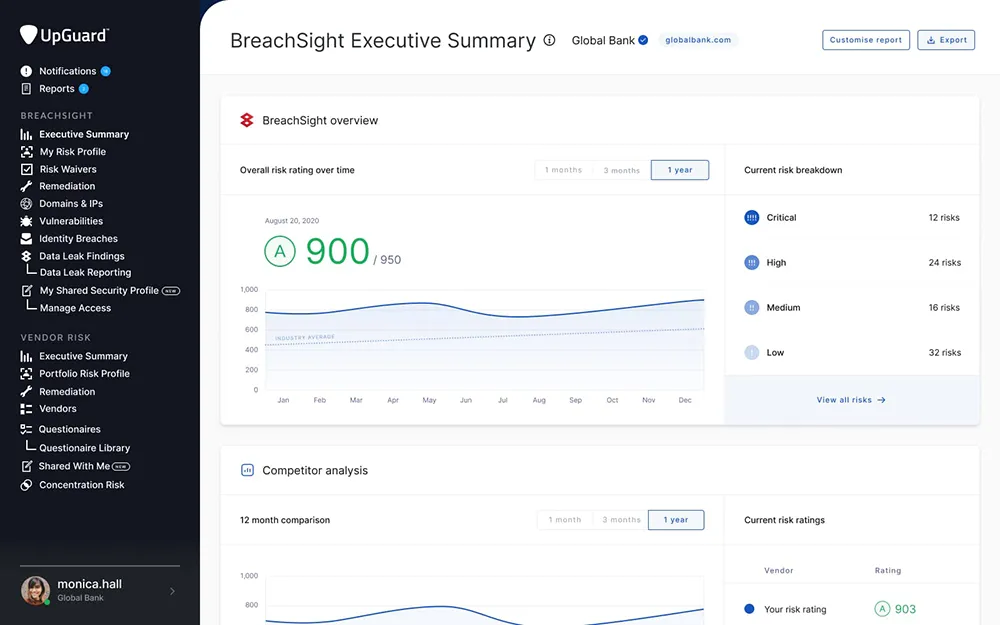
UpGuard is a vendor risk management solution providing visibility into the attack surface and third-party risks. It offers continuous monitoring and automated risk assessments to help organizations manage and mitigate potential vulnerabilities.
Key features of UpGuard include:
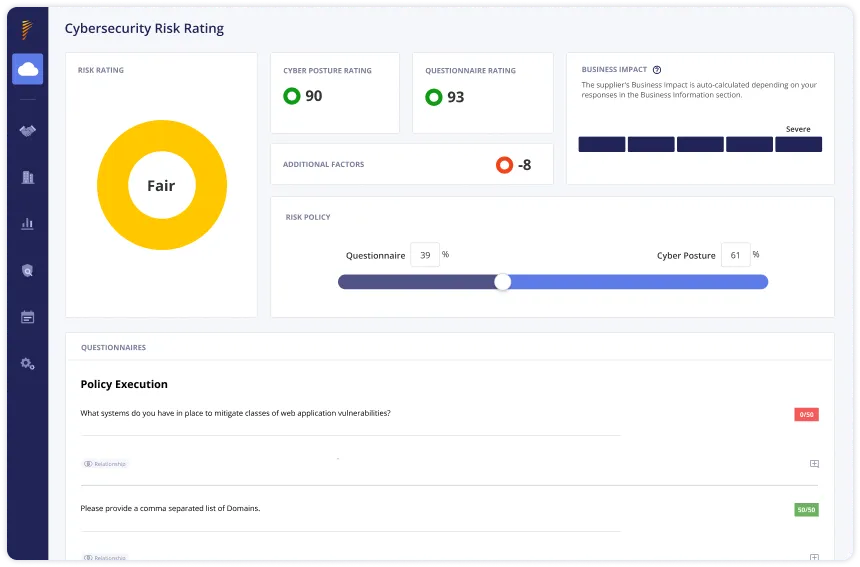
Panorays is a platform for external attack surface management, offering visibility into your organization's and the supply chain's cyber risks. It provides real-time, accurate data to help security teams evaluate and mitigate third-party cyber threats.
Key features of Panorays include:
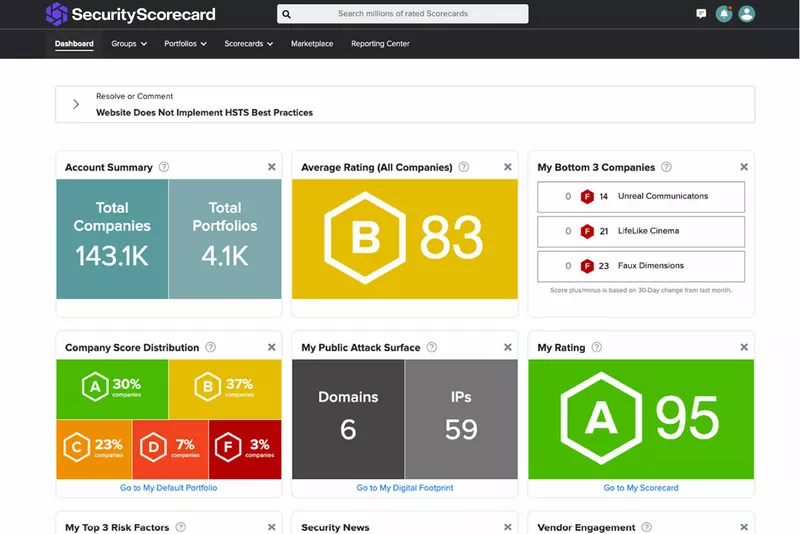
SecurityScorecard is a tool for uncovering external vulnerabilities and remediating cyber risks. It provides continuous monitoring of the attack surface, benchmarking against industry peers, and integrating external cybersecurity capabilities with the security operations center (SOC).
Key features of SecurityScorecard include:
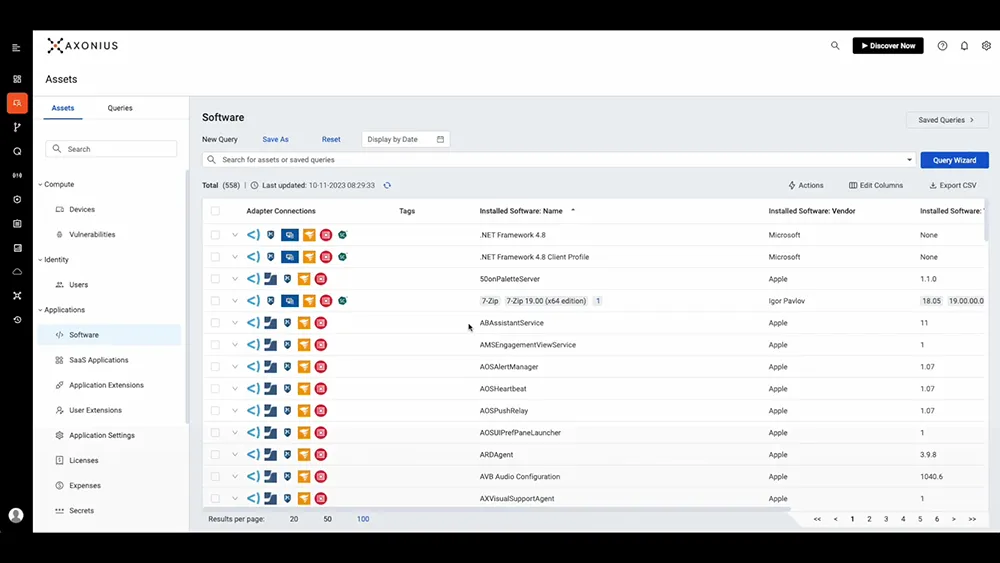
Axonius is a platform for cyber asset attack surface management (CAASM), providing a contextualized view of an organization’s entire asset inventory. Beyond listing assets, Axonius uncovers the security state, relationships, and context of each asset to help address risks.
Key features of Axonius include:
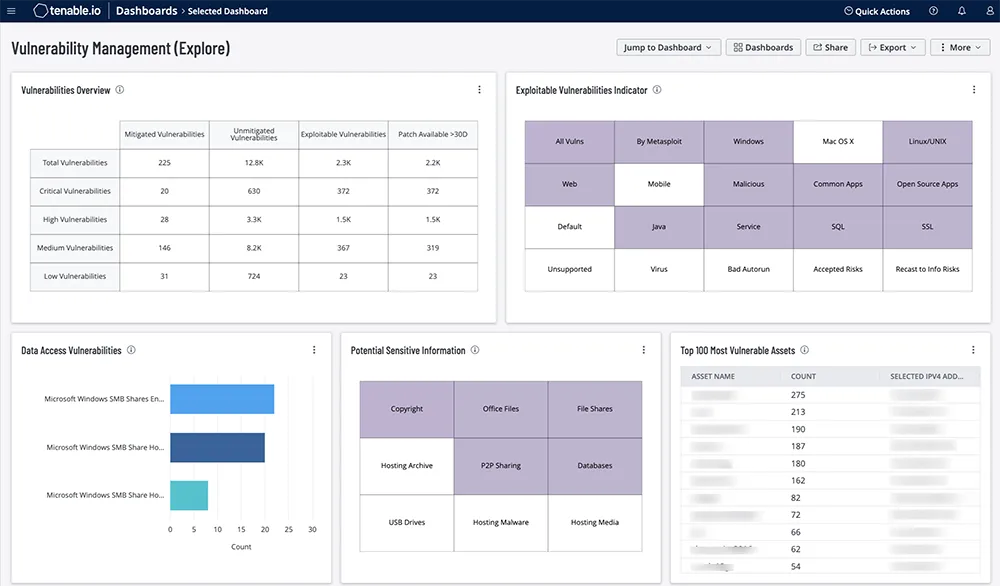
Tenable.io offers attack surface management capabilities, providing visibility into all Internet-connected assets, services, and applications. This enables organizations to understand their full digital footprint and assess and manage risks.
Key features of Tenable.io include:
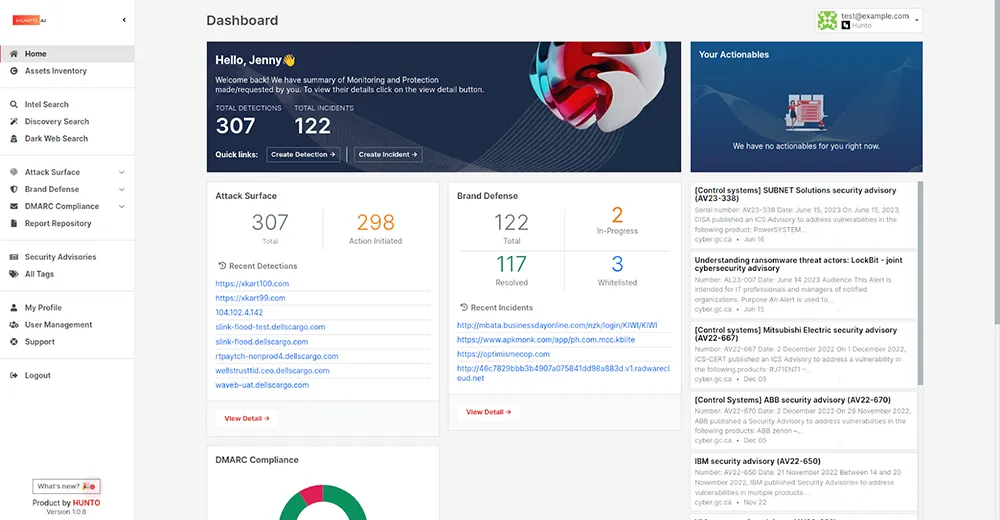
Hunto.ai is an attack surface management tool designed to give organizations the perspective of an attacker, enabling them to anticipate and mitigate potential cyber threats proactively. By providing visibility and optimized resource allocation, Hunto.ai helps organizations manage their expanding digital footprints.
Key features of Hunto AI include:

Bitsight provides external attack surface management (EASM) capabilities, offering visibility into the expanding attack surface. By tracking vulnerabilities, prioritizing critical issues, and implementing long-term solutions, Bitsight helps organizations mitigate cyber risks.
Key features of Bitsight include:

Dima Potekhin, CTO and Co-Founder of CyCognito, is an expert in mass-scale data analysis and security. He is an autodidact who has been coding since the age of nine and holds four patents that include processes for large content delivery networks (CDNs) and internet-scale infrastructure.
In my experience, here are tips that can help you better leverage Attack Surface Management (ASM) tools:
Attack surface management tools are essential for organizations to gain comprehensive visibility into their IT infrastructure and identify potential vulnerabilities. By automating asset discovery, classification, and continuous monitoring, these tools help prioritize risks and streamline remediation efforts. ASM solutions are crucial for maintaining a strong security posture in the face of evolving cyber threats, enabling organizations to protect sensitive data and maintain business continuity.

Access the GigaOm Radar for Attack Surface Management 2025 to get an overview of the available ASM solutions, identify leading offerings, and evaluate the best solution for you.